HobbyBoss F4U-4 Corsair, 1/48. A Small Build Review of Sorts.
This article is part of a series:
The Hobbyboss kit is proof that newer isn't necessarily better, but as an old Hasegawa F4U-4 was the first model I built upon returning to the hobby I felt that 3 years later it was time to have a stab at another F4U-4. In fact, I decided to build this Corsair first and bought the other two Tamiya Corsairs I posted as I find building in pairs or trios to be more enjoyable for me.
Regardless, let's talk about the build a little. Where I felt there was little point talking about the Tamiya Corsair, I think I'll have trouble condensing my thoughts on the Hobbyboss kit to prevent me moaning/rambling. So firstly let's get some background out of the way, the Hobbyboss kit was released in 2012 and multiple variants of the kit have come out, 10 in fact, ranging from the very first F4U-1 all the way to the final F4U-7. In 2012 they released two F4U-4s, an early and late version, both of which being Korean War birds. The Hobbyboss design philosophy for this kit is basically a 'jack of all trades, master of none' whereby with minimal effort they would be able to change the variant of the Corsair and rebox it repeatedly for that sweet, sweet cash, naturally that causes a few issues.
But first, let's talk about the good point of the kit which are certainly worth mentioning.
- It looks like a Corsair (I need to mention this before I rant about the issues, but from my shelf 50cm away it looks like a Corsair).
- It has possibly the best out of box engine I've encountered, I'd go so far to say that any resin aftermarket is a waste of money as it is so spot on amazing. Add some copper wire if you wish and it will be perfect.
- It has an amazing cockpit, based on references it seems pretty accurate too, but a lot of detail is housed here and I personally don't feel an aftermarket set is worth it for the majority of builders. It is far better than the older Tamiya kit.
- It contains a full set of well modeled rockets, drop tanks and the racks for them.
- For those who are interested, it contains an optional openable gun-bay. Naturally I'm not in the market for it as I mostly build in flight models, but it's a fine addition for those diorama lovers among you.
- The build itself is actually pretty good, I'd say it's above average in terms of fit. It isn't as simple to build as the Tamiya kit as it required a bit more filler. The wings have a better join if folded, but unfolded the join isn't as good compared to Tamiya.
- Control surfaces including flaps are a nice addition for a more 'action packed' build.
With that out of the way I think I'm ready to talk about the negatives, ranging from annoying issues to minor inconveniences. It's up to you to judge how you feel about the negatives. One thing that is neutral is the details, it's fine, perhaps 'good'. Better in some ways than the Tamiya but worse in others. It's about the same though.
- The cowling is wrong. Ouch, this was a hard thing to deal with. The F4U-4 has an interesting 'grin' due to the extra intake and I personally love the look of it. I originally bought the kit knowing this issue and felt I could ignore it, but when I saw the part I felt like the 'grin' was wrong enough that I had to fix it. Do note that aftermarket DOES exist to fix this, but unless you have a time machine to go back 5 years you aren't gonna find one in stock, unless you feel like burning £50 on a resin cowling which was more than the cost of the kit. What I did was venture into the wild west of scratchbuilding and conversions by buying an 1970 minicraft/academy kit for £10, cutting of the cowling and splicing it together with the cowling for the kit. The grin on that older kit is a bit more accurate, not perfect in my opinion, but much better. My result isn't great, I haven't re-riveted it as I don't have the tool, and my scribing skills are awful at best, but I think it still looks better despite this.
- The propellers are slightly wrong, once again a resin set DOES exist (it's the same set with the cowling) but I couldn't find it so I just left it as it.
- The fuselage is wrong. One nickname the Corsair received was 'hose nose', as the nose suprisingly looked like a hose. It's a very cylindrical shape, turned slightly oval at the cowling for the F4U-4 due to the redesign but still it should be a nice round cylinder. The Hobbyboss design is both too wide in diameter and too oval shaped. I don't have the skills to fix this, so left it as is.
- Have you noticed how big that canopy is? I have. It looks out of scale to me, being quite a bit too tall and naturally too wide due to the fuselage shape. Funnily enough the Tamiya canopy parts fit very cleanly under the Hobbyboss ones due to the extra height and width.
- All variants have the fabric covered wings, not an issue for F4U-1 - F4U-4, but a significant inaccuracy for the later variants. This could be fixed by sanding it down, but from what I hear the Hasegawa and Revell -5s, 6s and 7s are better anyways.
- The gunbays, whilst nice, have doors that absolutely don't fit when closed. This is quite annoying as I had no intention of open gun bays.
- No pilot! No bloody pilot! To be fair this is annoyingly common in kits and is one of those things where it only effects a certain percentage of builders, however I am one. As such it got a Tamiya happy chappy with a weird grin, not a huge fan of that figure but it's better than none.
- Call me a big kit, but in my humble opinion a propeller should spin or at the very least be posable. On a practical left this prevents damage from some bumps, but also is just nice. As far as I can tell (and to be honest the instructions aren't the clearest) the propeller was attached to a rod which then would either be glued or just move and fall forward 1cm and look incredibly weird, I fixed this by gluing the rod and sanding down a Tamiya poly-cap and shoving it into the propeller hub. It doesn't spin, but it can move fine.
- The cost of the kit is significantly more than the Tamiya kit. The only gripe I have with the Tamiya kit is really that the cockpit is a bit lackluster, but at 25 years old that's more age than anything else. You can easily buy a Tamiya Corsair, plus PE aftermarket, for the price of the Hobbyboss kit.
With that out of the way let's talk about the build, I had a few issues with this notably that cowling as stated. You may notice this Corsair is considerably weathered, annoyingly there isn't a whole bunch of photos of the F4U-4 mostly as the plane entered service in the very final months of the war. This aircraft belonged to the famous ace Kenneth Walsh in which he would score his 21st and final kill in it over Okinawa on June 22, 1945. Naturally as this is the aircraft he got the kill in, it doesn't have the kill marking yet. A few photos exist that show the F4U-4 during WW2 ranging anywhere from brand spanking new, slightly weathered, to quite considerably weathered. I used another F4U-4 of Walsh's known as 'A-53' as a reference as it showed a little more of the wing. For more weathered builds I like to use chipping fluid, so I sprayed a layer of it over some X-11 Silver, then another layer over some XF-4 Zinc Chromite, before spraying the MRP Sea Blue and weathering that with tonal variation before finally chipping. Naturally I found that chipping MRP was difficult as it dries to masking tape usable level within 10 minutes and is possibly the strongest paint I've encountered, but nonetheless water and a knife dealt with the dual-layer of chipping fluid nicely.
This was until I noticed a fatal flaw, the chipping fluid had made the paint appear bumpy. This happens about 50/50 whenever I use chipping fluids to various degrees but in this case it was particularly bad, so I sprayed a gloss coat over the top and used some sanding and polishing sticks. This smoothed the paint out considerably, but did cause some more paint to be chipped making the model look more worn than I was intending.
Let's talk decals. Do you want a WWII F4U-4? Well you need aftermarket, and it's not actually too easy to find decals for them presumably because they normally look boring as most -4s are just overall Sea Blue with a small white number on the side. I bought HGW's decals for this which are the only set I found with -4s for WWII and came with options for '13' and 'A-53', both used by Kenneth Walsh. HGW decals are the sort whereby you apply, use some decal solution, and then come back later and peel off the carrier film with some tweezers. I've never had so much issue with decals since I royally ruined by first decal attempt 3 years ago. The carrier film just would not come off cleanly, often leaving random parts of carrier film broken off in various areas of the decals, and also in some cases peeling off the actual decal when I did manage to get some film off. I've heard great things about HGW but I just couldn't get them to work. Did I use too much solution? Too little? Left it too long? Not enough time? Maybe I just had a bad batch. I couldn't tell you what I did wrong but every decal did go wrong.
After this I applied a wash, it's worth mentioning a few things here. Each Corsair got a different wash as a test. This one got a light wash, it looked quite sandy honestly. I feel this was the wrong choice as it seems quite unrealistic in areas. The Corsair Mk.II had a standard dark wash, this worked okay and was likely the right choice for the model but wouldn't have worked well on Sea Blue. The F4U-2 received a dark wash in some areas, but the Sea Blues received a grey wash of both light and dark mixed together, honestly whilst I built in trios the F4U-2 lagged behind and it didn't occur to me to mix the washes until I had already wrapped up this -4. In hindsight this would have been the better choice for this build, oh well, live and learn.
In summary the Hobbyboss kit builds a Corsair, but I wouldn't personally say it builds a good one. It doesn't build a bad one though. It's up to you to decide whether the positives outweigh the negatives and in my opinion it doesn't but it really depends how pedantic you want to be about Corsairs. That being said the F4U-4 sits in a weird area among models in 1/48 as you choice is only this, or a 1980s Hasegawa kit that will be reboxed until the end of time, or an old Academy/Minicraft set from the 70s with a more accurate cowling but less accurate everything else. In terms of Hobbyboss kits I can't recommend any of the F4U-1s as the Tamiya kit is simply better in almost every way, unless you want open gun bays, open canopy, and to have an engine that you can't see without modifications, whilst the Fleet Air Arm kit versions may seem appealing modifying the Tamiya wings takes less than 5 minutes with a file and a sanding stick, and Tamiyas Corsair plus decals/masks is still less than the Hobbyboss kit. For an F4U-5 and beyond I can't personally say, but the incorrect wings are a major oversight and I hear Hasegawas and Revells offerings are better at a lower cost.
All in all, HobbyBoss have chosen the route of making money by making a general Corsair they can pair with minimal changes to fit every Corsair variant they can, but in doing so they don't have any versions I can recommend more than other kits with the F4U-4 being the kit you have to get if you want a -4 rather than the one you'll want to get.
Ammendment, 2024
Greetings from the future! In the off-chance anyone runs into this build I would like to mention that Magic Factory are hinting at doing an F4U-4 in the future in 1/48, no date on it at the moment but personally I'd hold off on getting an F4U-4 until then. I pulled this model out of the shelf the other day to dust it and honestly it has aged like milk, excluding my paintwork I just really dislike the shape of this model. The overside canopy and the overly wide fuselage have made it stand out on the shelf amongst my other Corsairs. I'm looking forward to replacing this one whenever possible.
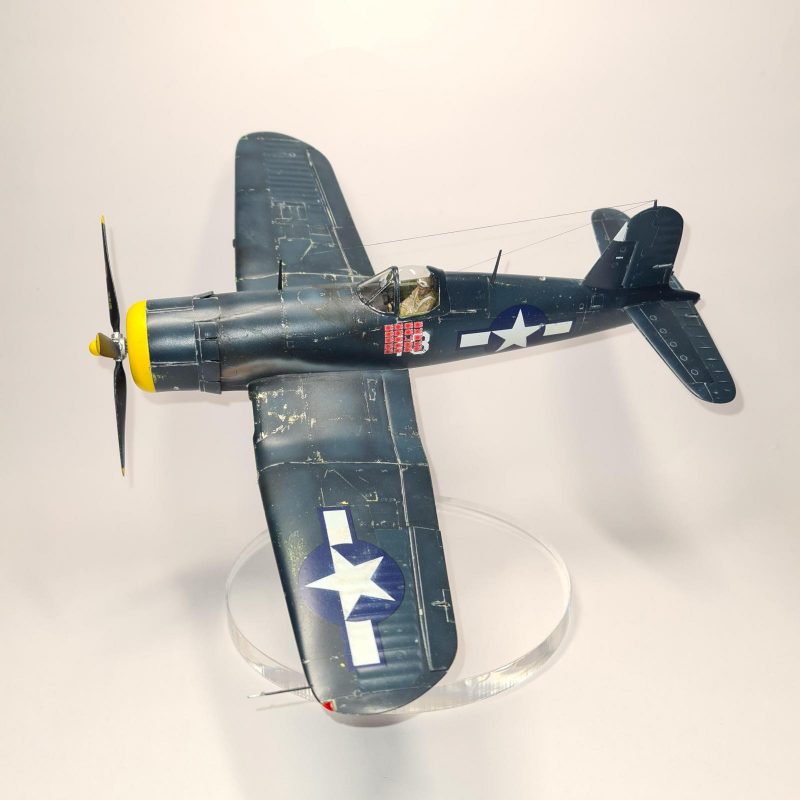
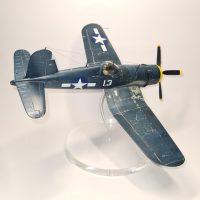
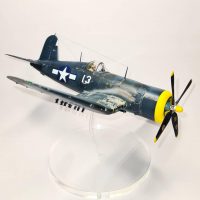
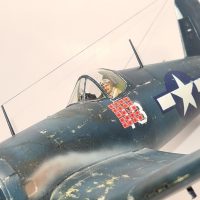
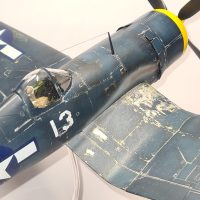
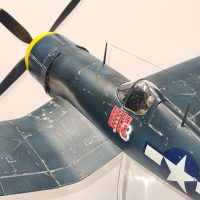
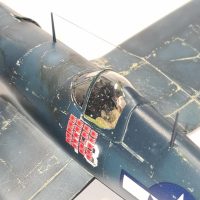
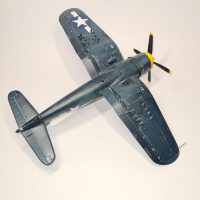
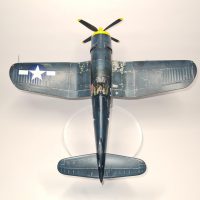
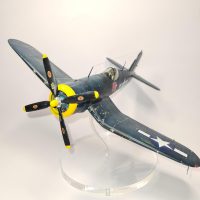
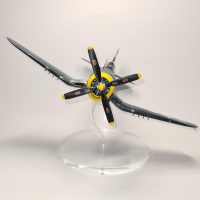
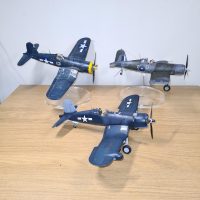

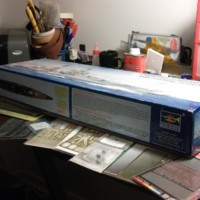
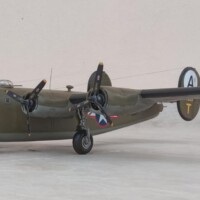
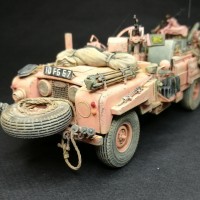
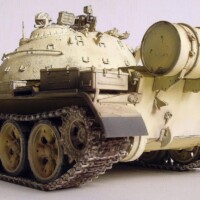
You can boil all this down to the one word I use to describe Hobby Boss Corsairs: Disappointing.
They're not good enough to be a "miss" and not bad enough to be "terrible."
Somebody still needs to do a good F4U-4.
Absolutely agree on both. It builds together fine and produces something that looks like a Corsair, but anyone who cares to do a little research when they build a model will notice the flaws.
You have done a wonderful job on that kit, Harvey. Loved the weathering: not an easy taskbto weather an all dark blue camo. Loved the pilot, as well!
Thanks for the very informative article on the kit.
Thank you! I found the MRP paints used to be quite good for doing paint weathering, a little easier than Tamiya actually to achieve a good amount of tonal variation that doesn't get lost in the subsequent clear coats.
Besides the drawbacks of this kit, to me you have performed an outstanding job, Harvey.
The finish looks like it has seen some severe action.
Well done.
Thank you! As stated a little more than planned but I think it's still within the realms of possibility rather than over chipped.
An interesting and entertaining read, Harvey, definitely liked. This kit was never on my "wanted" list, and now it never will be.
It's definitely a shame that it's the only option for a -4, unless you want to pay £80 for a resin conversion for a Tamiya kit. Hopefully a better version comes out at somepoint.
I like how you listed the kit's attributes first. Always nice to see a -4 in WWII markings, as it doesn't happen very often. Another nice Corsair.
Thank you! Certainly is an often overlooked aircraft for WWII, you'd be forgiven for thinking it never saw service during the war due to the lack of decal options out there.
Ended up with a very nice-looking Corsair in the end! Well done.
Thank you, glad you think so!